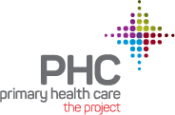It has become popular for people who work in public health and social services fields, as well as activists, community organizers, and advocates for the LGBTQ+ community to share their pronouns in social settings. But why is this so important to these groups and what does it mean? Let’s dig a little deeper into this together.
What are pronouns?
To give you a little context, think back to your days in Mrs. Rasmussen’s fifth grade English class. Pronouns are words that take the place of a noun to prevent overusing the same word in a sentence. Here’s an example:
- Without pronouns: Charlie went to the grocery store. Then Charlie went to the park with Charlie’s dog.
- With pronouns: Charlie went to the grocery store. Then he went to the park with his dog.
“He” and “his” take the place of Charlie’s name so we don’t have to say it so many times. Pronouns make language more efficient and add clarity.
So, what’s the problem?
Our pronouns are gendered, meaning if someone identifies as (or is seen to be) a male, we generally use “he, him, and his,” and if someone is female, we generally use “she, her, and hers.” This becomes a problem when we use a person’s characteristics like facial structure, body type, and vocal pitch to make assumptions about a person’s gender and their pronouns.
Not all people with lower voices are male, and not all people with higher pitched voices are female. In the past, our society put people into one of two gender binaries based on characteristics traditionally attributed to each gender. Now, we don’t put up with that. Many of us see gender as more open and fluid. We may have been assigned a certain gender at birth based on our genitals and not how we feel inside or interact with the world. We may have accepted this gender identity for a time, but as we grow we feel less and less comfortable with that identity, and we want the world to know it.
Keenen Crow (they, them, theirs) is the Director of Policy and Advocacy at One Iowa. He says “Generally it’s not all that relevant as to why someone uses particular pronouns. It’s about basic respect, that’s basically what it comes down to. If you’ve ever been misgendered, you may realize that. That can be jarring. It can undermine your sense of how you think you are perceived; it can create some tension if that person refuses to correct themselves.”
What can we do about it?
In order to avoid using a person’s characteristics to make an assumption about what their gender is, and thus to infer the pronouns we use for them, we ask them what their pronouns are. Using the incorrect pronouns to refer to someone can cause a very painful sense of gender dysphoria, which “refers to psychological distress that results from an incongruence between one’s sex assigned at birth and one’s gender identity.” Gender dysphoria can cause someone to feel anxious, depressed, confused, or ashamed of who they are. Nobody wants that, and one of the easiest ways to not cause someone’s gender dysphoria is to use their pronouns.
Another way we can support people is to tell people our pronouns when we introduce ourselves. That might sound something like, “My name is Noah and my pronouns are he and him.” This tells people how to refer to us, it avoids putting the burden on transgender people alone to tell us their pronouns. It acknowledges that we’re creating a safe space together where people can be their truest and deepest selves.
Dar Krom (they, them, theirs), Program Director of the Project says, “having a word to describe you validates who you are and helps you feel included. If there’s a word to describe me, it means there are other people like me and this helps me find my community. It’s also good practice to introduce yourself as “Hi, I am Dar Krom, Program Director, my pronouns are They and Them, how would you like me to address you?”
It’s as simple as that, and it’s basic respect. Introduce yourself with your name, state your pronouns, and ask the other person as to how they would like to be referred. Why not take a simple action that can make the world a safer, happier place?
